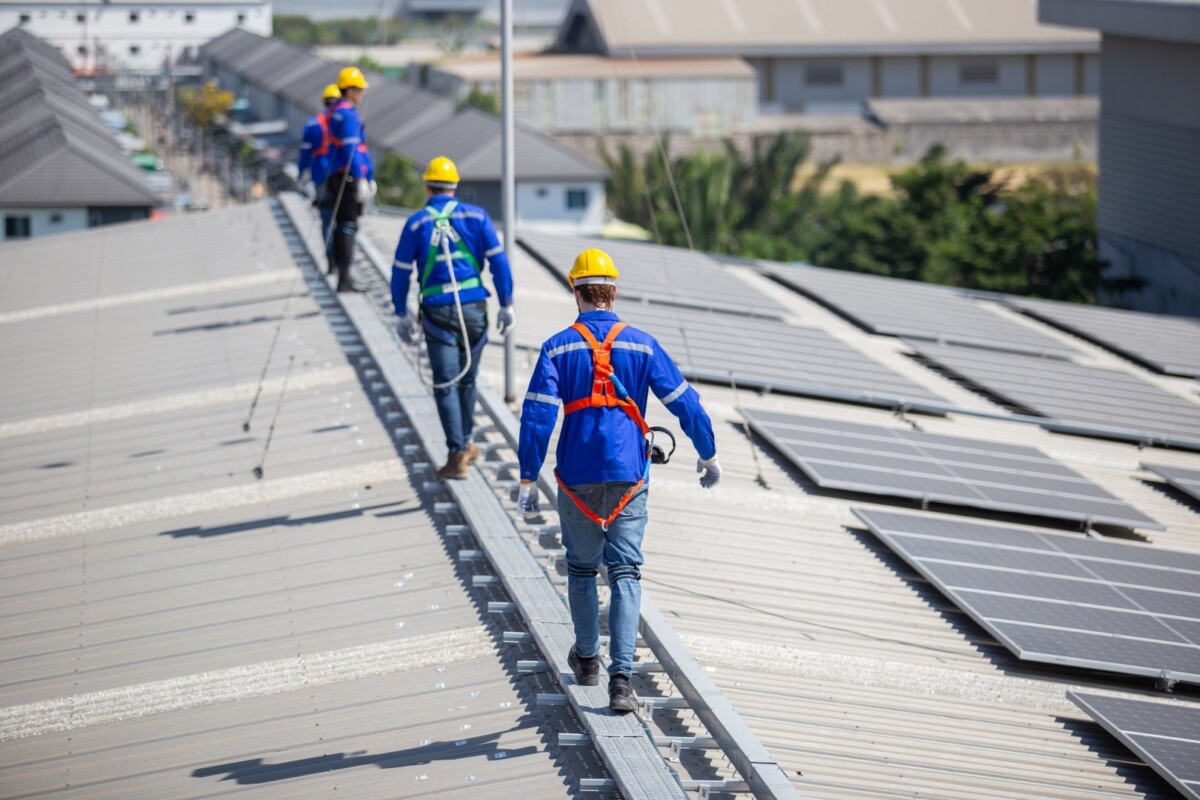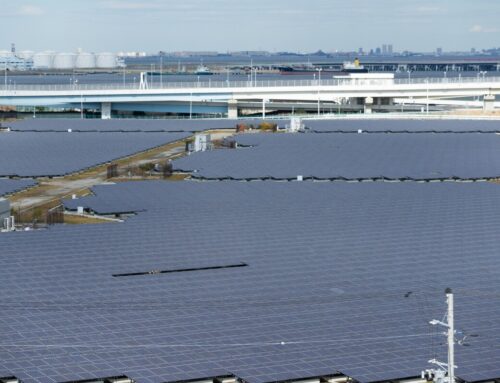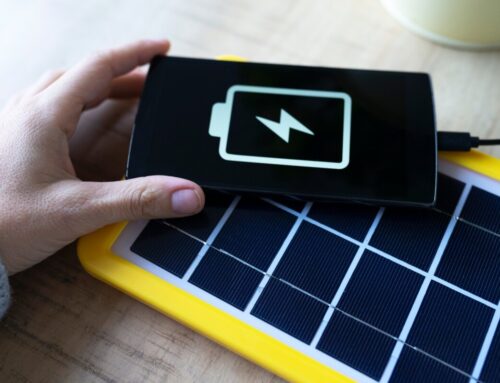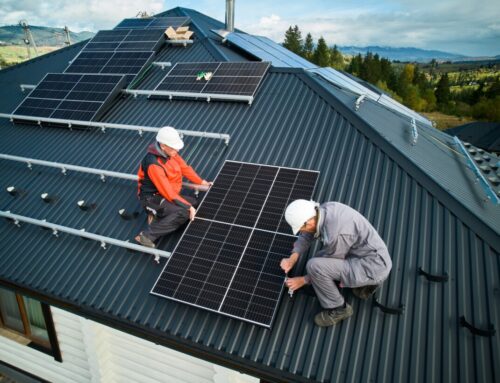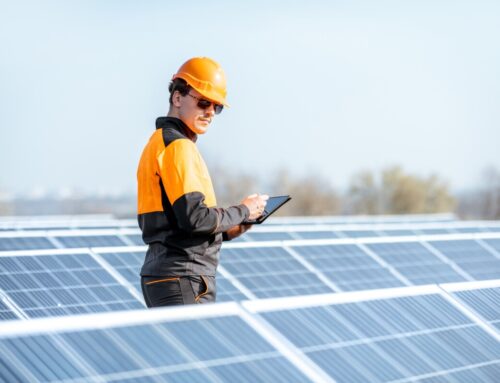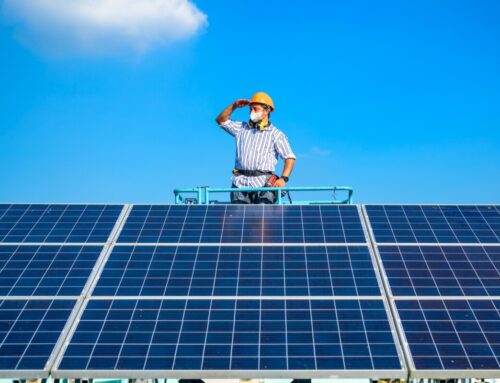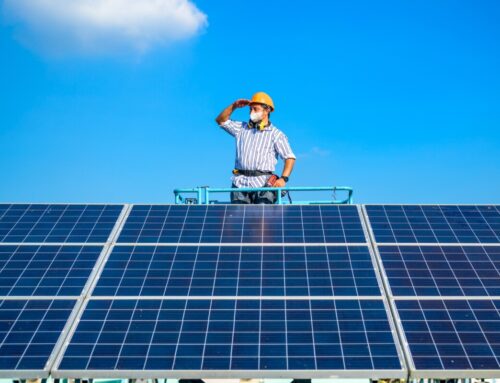Mastering Photovoltaic Installation
Understanding the Basics of Photovoltaic Installation
Imagine harnessing the sun’s power to fuel your home or business. That’s the magic of Photovoltaic Installation. However, many people find the process daunting, filled with technical jargon and complex decisions. But fear not! By breaking down the basics, we promise to make the journey to solar energy simple and accessible for everyone.
Photovoltaic Installation involves setting up solar panels to convert sunlight into electricity. This process begins with assessing your energy needs and the suitability of your location. Factors like roof orientation, shading, and local climate play a crucial role. Once these are determined, the installation process can commence, transforming your space into a sustainable energy hub.
Key Steps in Photovoltaic Installation
- Site Assessment: Evaluate roof condition, angle, and exposure to sunlight.
- System Design: Customize the solar panel layout to maximize efficiency.
- Installation: Secure panels, connect wiring, and integrate with the existing electrical system.
- Inspection and Activation: Ensure compliance with local regulations and activate the system.
Transitioning to solar energy through Photovoltaic Installation not only reduces your carbon footprint but also offers long-term savings on energy bills. As more people embrace this technology, the world moves closer to a sustainable future. So, why wait? Start your solar journey today!
How Does Photovoltaic Installation Work?
Photovoltaic Installation is capturing attention worldwide as a sustainable energy solution. The problem many face is understanding how this technology transforms sunlight into electricity. The promise? A cleaner, renewable energy source that reduces reliance on fossil fuels. Let’s explore how photovoltaic installation works and why it’s a game-changer for energy consumption.
Understanding the Basics
Photovoltaic installation involves setting up solar panels that convert sunlight into electricity. These panels contain photovoltaic cells made from semiconductor materials like silicon. When sunlight hits these cells, it knocks electrons loose, creating an electric current. This process is known as the photovoltaic effect, and it’s the heart of solar energy conversion.
Key Components of Photovoltaic Systems
- Solar Panels: Capture sunlight and convert it into direct current (DC) electricity.
- Inverter: Converts DC electricity into alternating current (AC), which powers homes and businesses.
- Mounting Systems: Secure panels in place, optimizing exposure to sunlight.
- Battery Storage: Stores excess energy for use when sunlight is unavailable.
Benefits of Photovoltaic Installation
- Renewable Energy Source: Reduces carbon footprint and dependence on non-renewable resources.
- Cost Savings: Lowers electricity bills and offers potential tax incentives.
- Energy Independence: Provides a reliable power source, especially in remote areas.
By understanding the process and components of photovoltaic installation, you can appreciate its role in fostering a sustainable future. Transitioning to solar energy not only benefits the environment but also offers economic advantages, making it a wise choice for those looking to invest in green technology.
The Benefits of Investing in Photovoltaic Installation
Are you tired of skyrocketing energy bills and looking for a sustainable solution? Photovoltaic Installation might just be the answer you need. This innovative technology not only reduces your carbon footprint but also promises long-term savings. By harnessing the power of the sun, photovoltaic systems convert sunlight into electricity, offering a clean and renewable energy source for your home or business.
Why Choose Photovoltaic Installation?
- Cost Savings: Once installed, photovoltaic systems can significantly lower your electricity bills, providing a return on investment over time.
- Environmental Impact: By using solar energy, you reduce reliance on fossil fuels, thus decreasing greenhouse gas emissions.
- Energy Independence: Generate your own electricity and reduce dependence on the grid, protecting yourself from fluctuating energy prices.
Long-Term Financial Benefits
Investing in photovoltaic installation is not just about immediate savings. Over the years, the system pays for itself through reduced energy costs and potential government incentives. Many regions offer tax credits and rebates, making the initial investment more affordable and accelerating the payback period. Moreover, solar panels can increase property value, making it a wise financial decision for homeowners and businesses alike.
Choosing the Right Photovoltaic System for Your Needs
Are you considering a photovoltaic installation but unsure where to start? With the growing demand for renewable energy, finding the right photovoltaic system can seem overwhelming. But don’t worry, we’ve got you covered. By understanding your energy needs and the options available, you can make an informed decision that suits your lifestyle and budget.
Assessing Your Energy Needs
Before diving into photovoltaic installation, it’s crucial to evaluate your current energy consumption. Consider your household size, typical energy usage, and future needs. This assessment will help determine the system size required to meet your energy goals efficiently.
- Household Size: Larger households typically require more energy.
- Energy Usage: Analyze past utility bills to understand your consumption patterns.
- Future Needs: Consider potential changes, like electric vehicle charging or home expansions.
Types of Photovoltaic Systems
Once you’ve assessed your energy needs, explore the different types of photovoltaic systems available. Each type offers unique benefits, so understanding these can help you choose the best fit.
- Grid-Tied Systems: Ideal for those who want to reduce energy bills while staying connected to the grid.
- Off-Grid Systems: Perfect for remote locations or those seeking complete energy independence.
- Hybrid Systems: Combine the benefits of both grid-tied and off-grid systems, offering flexibility and reliability.
By taking these steps, you can confidently embark on your photovoltaic installation journey, knowing you’ve chosen the right system for your needs.
Step-by-Step Guide to Photovoltaic Installation
Understanding Photovoltaic Installation
Photovoltaic installation involves setting up solar panels to convert sunlight into electricity. This process can seem daunting, but breaking it down into manageable steps makes it achievable. From assessing your energy needs to connecting your system to the grid, each phase is crucial for a successful installation.
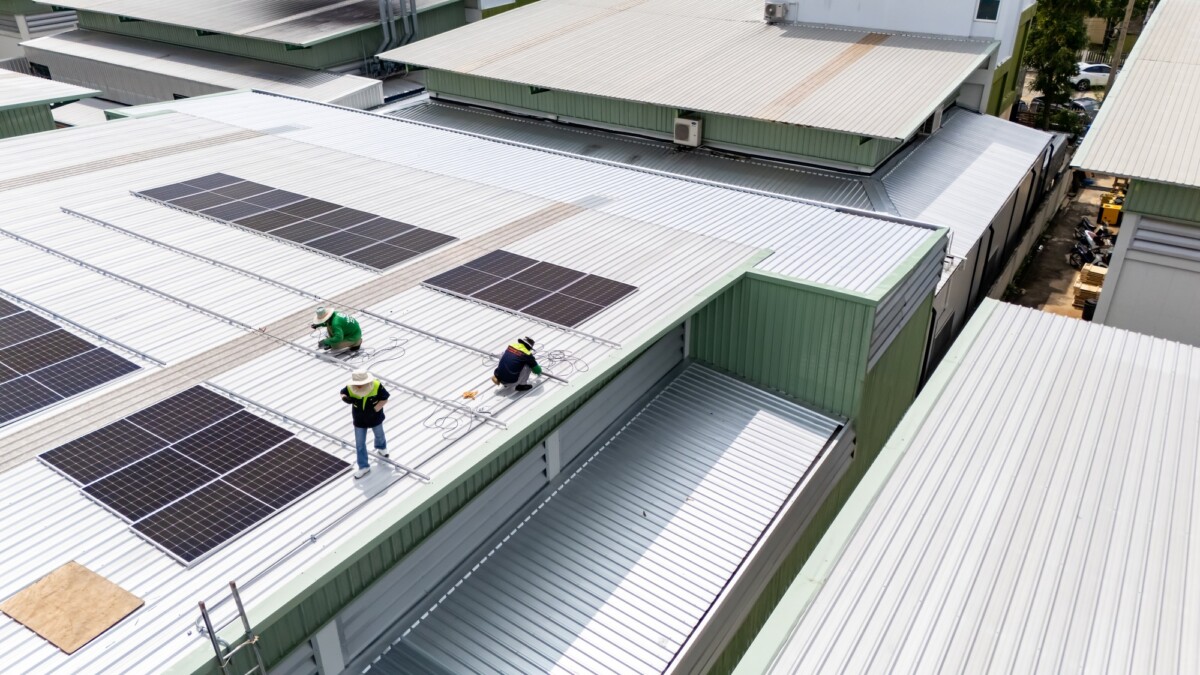
Curious about solar? Let us help you discover how solar energy can revolutionize your home and save you money. Request Your Free Solar Estimate at SOLAR ENERGY
Key Steps in Photovoltaic Installation
- Site Assessment: Evaluate your roof’s suitability for solar panels, considering factors like sunlight exposure and structural integrity.
- System Design: Choose the right type and number of panels based on your energy consumption and roof space.
- Permitting: Obtain necessary permits from local authorities to ensure compliance with regulations.
- Installation: Secure the panels and connect them to your electrical system.
- Inspection and Connection: Have the system inspected and connected to the grid for operational approval.
Benefits of Photovoltaic Installation
- Cost Savings: Reduce electricity bills significantly over time.
- Environmental Impact: Lower your carbon footprint by using renewable energy.
- Energy Independence: Gain more control over your energy sources and usage.
By following these steps, photovoltaic installation becomes a straightforward process that empowers you to embrace sustainable energy solutions.
Common Challenges in Photovoltaic Installation and How to Overcome Them
Photovoltaic Installation is a promising solution for sustainable energy, capturing the sun’s power to fuel our homes and businesses. However, the path to harnessing this renewable energy isn’t without its hurdles. Many face challenges during the installation process, but understanding these obstacles can lead to effective solutions and a smoother transition to solar power.
Site Assessment and Preparation
One of the first challenges in Photovoltaic Installation is selecting the optimal site. Shading issues, roof orientation, and structural integrity can impact efficiency. To overcome this, conduct a thorough site assessment. Consider hiring professionals to evaluate shading patterns and roof conditions, ensuring your system receives maximum sunlight exposure.
Regulatory and Permitting Hurdles
Navigating the maze of regulations and permits can be daunting. Each locality has its own set of rules for Photovoltaic Installation. Research local regulations early in the planning process. Collaborate with experienced installers who are familiar with the permitting landscape to streamline approvals and avoid delays.
- Understand zoning laws
- Prepare necessary documentation
- Consult with local authorities
Technical and Maintenance Challenges
Technical issues, such as inverter failures or panel degradation, can arise post-installation. Regular maintenance is key to overcoming these challenges. Schedule periodic inspections and cleanings to ensure your system operates efficiently. Additionally, invest in quality components and warranties to mitigate potential technical setbacks.
What to Expect During a Photovoltaic Installation Project
Are you ready to harness the power of the sun? Photovoltaic installation is your gateway to sustainable energy and reduced electricity bills. However, the process can seem daunting if you’re unfamiliar with what it entails. Fear not, as we promise a smooth transition to solar energy by breaking down the steps involved in a photovoltaic installation project.
Initial Consultation and Site Assessment
Before the installation begins, a thorough site assessment is conducted. This involves evaluating your roof’s condition, orientation, and shading. Professionals will discuss your energy needs and design a system tailored to your home. This step ensures that your photovoltaic installation is optimized for maximum efficiency.
Installation Day
On installation day, expect a team of skilled technicians to arrive with all necessary equipment. The process typically involves mounting the solar panels, connecting them to the inverter, and integrating the system with your home’s electrical grid. This phase is usually completed within a day or two, depending on the system’s complexity.
- Mounting the Panels: Securely attaching panels to your roof.
- Electrical Connections: Linking panels to the inverter and grid.
- System Testing: Ensuring everything functions correctly.
Post-Installation and Maintenance
Once installed, the system undergoes rigorous testing to ensure optimal performance. You’ll receive guidance on monitoring your system and maintaining it for longevity. Regular maintenance checks, such as cleaning the panels and inspecting connections, are crucial for sustaining efficiency and energy savings. With these steps, your photovoltaic installation will seamlessly power your home with clean, renewable energy.
Maximizing Efficiency: Tips for Optimal Photovoltaic Installation
Site Selection and Orientation
Choosing the right location for your photovoltaic installation is paramount.
Key Considerations:
- Sunlight Exposure: Ensure the site receives ample sunlight throughout the day, free from obstructions like trees or buildings.
- Roof Angle and Orientation: Ideally, panels should face true south in the northern hemisphere and true north in the southern hemisphere, with an angle that matches your latitude for optimal sun exposure.
Quality Components and Professional Installation
Investing in high-quality components and professional installation services can significantly impact your system’s performance.
Why It Matters:
- Durability and Efficiency: Premium panels and inverters often come with better warranties and higher efficiency ratings.
- Expertise: Professional installers ensure that every component is correctly fitted and optimized for maximum energy capture.
Regular Maintenance and Monitoring
To maintain peak performance, regular maintenance and monitoring are essential.
Steps to Consider:
- Routine Inspections: Check for dirt, debris, or damage that could impede efficiency.
- Performance Monitoring: Use monitoring systems to track energy production and identify issues early.
By following these tips, you can ensure your photovoltaic installation operates at its highest potential, providing sustainable energy for years to come.
Exploring the Cost Factors of Photovoltaic Installation
Are you considering a photovoltaic installation for your home or business? You’re not alone. With the promise of reduced energy bills and a smaller carbon footprint, it’s no wonder more people are turning to solar power. However, understanding the cost factors involved can be a bit daunting. Let’s break it down to make the decision easier for you.
Initial Investment
The initial cost of photovoltaic installation can vary significantly based on several factors. System size is a primary determinant; larger systems naturally cost more but can offer greater savings over time. Quality of materials also plays a role—opting for high-efficiency panels might mean a higher upfront cost but can lead to better performance and longevity.
Installation and Labor Costs
Labor costs are another crucial component. The complexity of your roof and the local labor rates can influence the overall expense. Roof type and installation complexity can add to the cost, especially if additional structural support is needed. Always consider getting multiple quotes to ensure competitive pricing.
Incentives and Rebates
Don’t forget about the financial incentives available. Many governments offer tax credits, rebates, or grants to offset the initial costs of photovoltaic installation. These incentives can significantly reduce your out-of-pocket expenses, making solar power more accessible than ever.
How SolarEnergy Can Help You with Your Photovoltaic Installation Needs
Are you ready to harness the power of the sun? Photovoltaic installation is your gateway to sustainable energy, but navigating the complexities can be daunting. At SolarEnergy, we promise to simplify this journey, ensuring you enjoy the benefits of solar energy without the hassle.
Why Choose Photovoltaic Installation?
- Sustainable Energy: Reduce your carbon footprint and contribute to a greener planet.
- Cost Savings: Lower your electricity bills and increase your home’s value.
- Energy Independence: Gain control over your energy source and reduce reliance on the grid.
Our Comprehensive Services
SolarEnergy offers a full suite of services to meet your photovoltaic installation needs. From initial consultation to final implementation, our team of experts is dedicated to providing personalized solutions that fit your specific requirements. We ensure every step is handled with precision and care, guaranteeing a seamless transition to solar energy.
Benefits of Partnering with Us
- Expert Guidance: Our experienced professionals guide you through every phase of the installation process.
- Quality Assurance: We use top-tier materials and cutting-edge technology to ensure long-lasting performance.
- Customer Support: Our commitment to you doesn’t end with installation; we offer ongoing support to ensure your system operates at peak efficiency.
Embrace the future of energy with confidence. Let SolarEnergy be your trusted partner in photovoltaic installation, transforming your home into a beacon of sustainability and efficiency.
Don’t wait to go solar! Thousands of homeowners are saving—join them and start reaping the benefits.
Book Your Free Consultation at SOLAR ENERGY
Explore additional solar solutions at NEW SOLAR QUOTES and discover how it can benefit your home!

